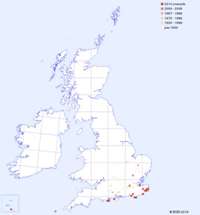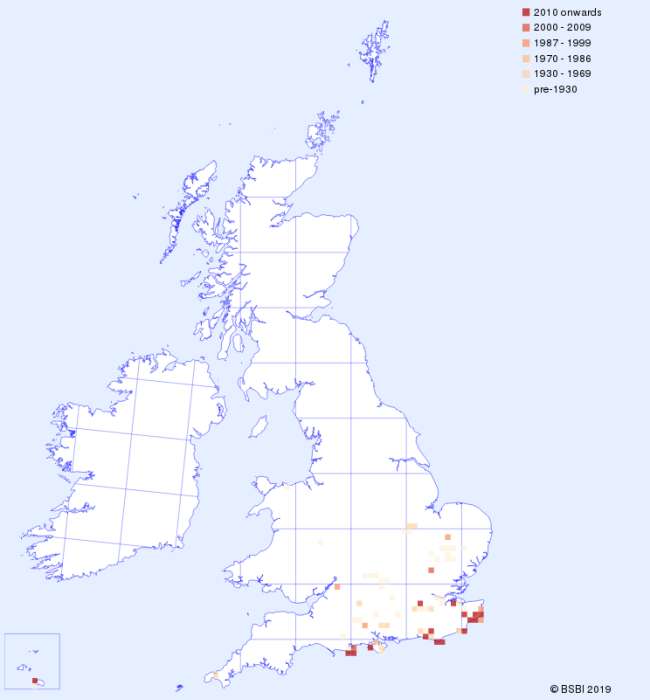The Early Spider-orchid is classed as Nationally Scarce and is protected under Schedule 8 of the Wildlife and Countyside Act. Its UK distribution is almost entirely restricted to the South Coast between Kent and Dorset, where it is locally abundant. Ophrys sphegodes flowers early (with year-on-year variability due to weather conditions) from late March to early June. This orchid favours short-sward unimproved grassland with underlying chalk or limestone, but it has also been known to appear in large numbers on disturbed ground, such as spoil heaps, and in old quarries. Ophrys sphegodes is confined to Europe and is distributed from Greece westwards to Spain and its range extends to France and Belgium in the North.
| Distribution Map | Key Features | |
 |
Records for the Early Spider-orchid from BSBI are shown on the map with most recent in front. (Hover the mouse over the small map to expand it.) |
Plant: 5-15cm tall but occasionally to 45cm. When competing with longer grass the plants tend to grow taller. |
Image Gallery for Early Spider-orchid Ophrys sphegodes
| Pollination | Taxonomy & Hybrids |
Pollinated by male solitary bees Andrena nigroaenea, which are attracted by the shape and texture of the flower and also the pheromones which they emit. After landing on the flower, the insect attempts to copulate with it - so-called pseudocopulation - and during this process the pollen-bearing pollinia attach to the head of the insect. Pollination rates are variable due to a lack of suitable insects, and it has been suggested that many of the British populations are self-pollinated. The stability of the current populations seems to suggest that sufficient seed is being produced. |
The Early spider-orchid belongs to the Ophrys genus. Its scientific name derives from the Greek word 'sphekeion' which means 'small wasp-like spider'. |
Articles about Early Spider-orchid in JHOS
-
